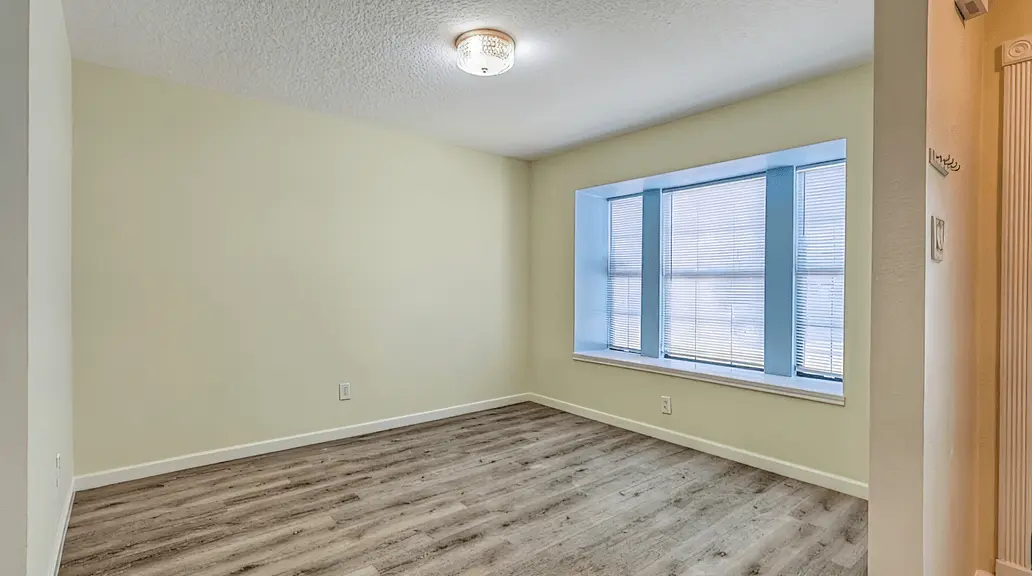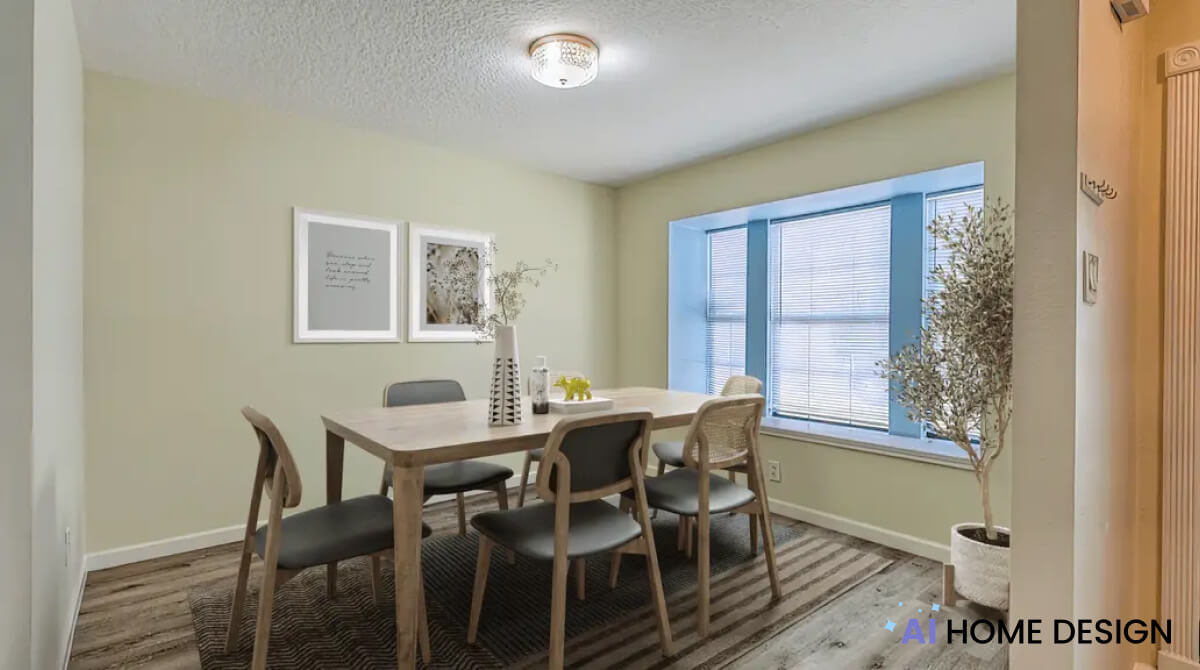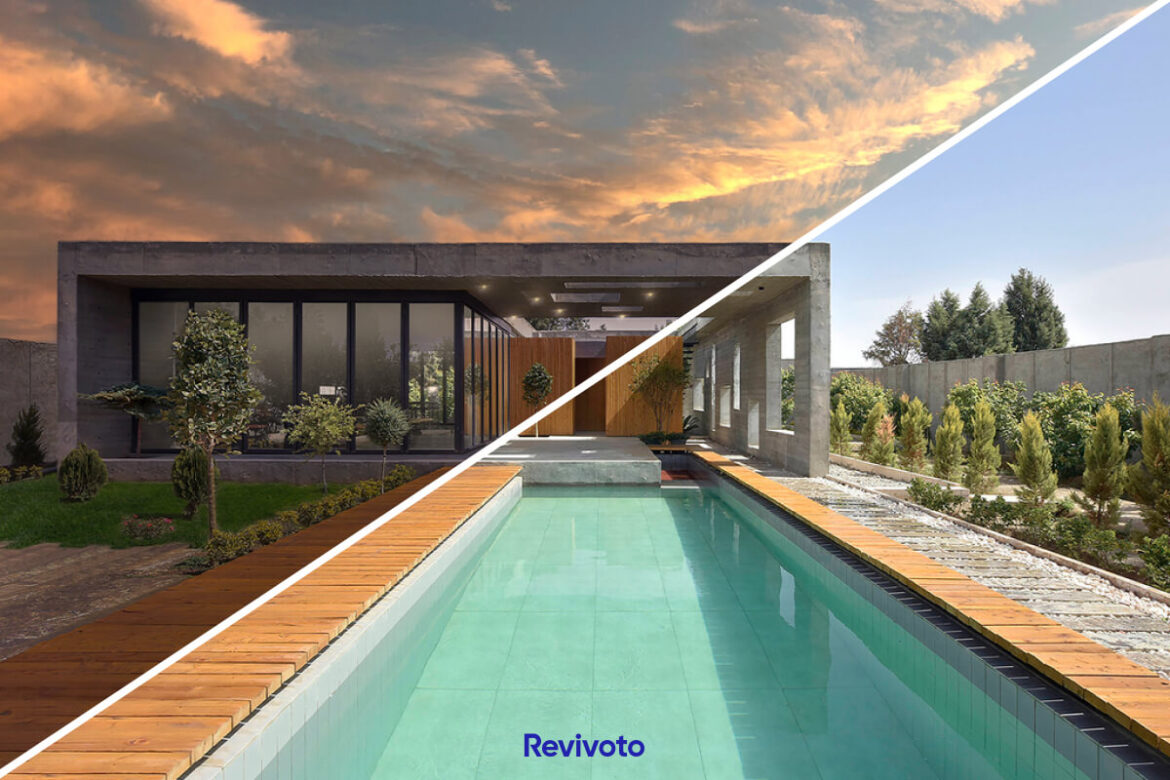Consider a future where intelligent algorithms automatically recognize, enhance, and stage property images. AI real estate photo editing brings this vision to life, allowing photographers, real estate agents, and marketers to showcase properties in their best aspects. Today, instead of spending countless hours manually editing images or hiring professional photographers for each listing, you can use AI-powered tools to automatically identify main features in property photos, enhance lighting and colors, remove unwanted objects, and even virtually stage empty spaces with furniture and decor.
This article explores AI’s unique abilities and industry-changing potential in real estate photo editing.
Table of Contents
Why Is Real Estate Photo Editing Important?
Real estate photo editing can enhance the visual appeal of property images, making them more attractive to potential buyers or renters. During the process, techniques like color correction, lighting adjustment, and object removal are used to create visually appealing images. High-quality, compelling photographs can highlight a property’s best features and boost its marketability, sale, or rent. As a result, in a competitive real estate market, real estate photo editing is critical to efficiently marketing properties, taking attention, and maximizing their value.
What Is AI Real Estate Photo Editing?
AI photo editing is the automatic enhancement and modification of digital images using artificial intelligence algorithms. AI algorithms can analyze and learn from training data to enhance pictures, adjust colors and lights, and remove unwanted objects. This technology saves time and money while making the editing process more efficient. With advancements in machine learning and deep learning, AI photo editing continues to evolve and change various industries, such as real estate, e-commerce, advertising, and digital marketing.
Advantages of Ai in Photo Editing
Using AI in real estate photo editing offers several advantages:
Time and cost efficiency
AI-powered automation reduces manual editing tasks, saving resources and enabling faster turnaround times for property listings.
Enhanced visual appeal
AI photo editing tools can improve image quality by adjusting lighting, exposure, and colors and removing unwanted objects to create professional-looking photos.
Increased marketing and sales effectiveness
High-quality images created through AI editing techniques help properties stand out in online listings, advertisements, and social media, leading to more inquiries and successful sales or rentals.
Virtual staging and personalization
AI technology enables virtual staging and 360-degree tours to help potential buyers or renters visualize the aspects of a space and imagine themselves living in it. AI-driven personalization allows customized staging and design choices tailored to individual client preferences. With service providers like AI HomeDesign, you can apply your style of choice and opt for unlimited revisions until you’re completely satisfied with the level of personalization that the virtually staged result provides.


Consistency and accuracy
AI-powered image editing tools apply consistent editing standards to a collection of images, ensuring a professional appearance. Additionally, they provide proper color representation and perspective correction, improving the pictures’ overall quality.
Highlighting key features of property
AI photo editing can automatically identify and enhance key features of a property, such as architectural details, spaciousness, or desirable amenities.
Scalability
AI-powered photo editing can handle large volumes of images efficiently, making it suitable for real estate agencies and photographers working on multiple properties simultaneously. Scalability allows for streamlined processes and increased productivity.
Disadvantages of Ai in Real Estate Photo Editing
While there are advantages to using AI in property photo editing, there are also some potential disadvantages to consider:
Ethical considerations
AI-powered editing can lead to misleading representations and false expectations for potential buyers or renters by over-editing or enhancing images beyond their realistic appearance.
Lack of human touch
AI algorithms are powerful but lack a human editor’s subjective judgment and creative intuition. They also lack artistic choices and adaptability to unique situations.
Technical limitations
AI algorithms cannot perform ideally in complex editing scenarios, and they struggle with recognizing and editing particular objects, particularly in cluttered scenes. In such cases, precise adjustments may still require manual editing or human intervention.
Dependency on training data
AI algorithms’ performance is heavily influenced by the quality and diversity of the training data they are trained on. If the training data is limited, it can affect the accuracy and effectiveness of the editing process.
Initial investment and learning curve
Implementing AI technology in real estate photo editing may require an initial software, hardware, or training investment. Additionally, there may be a learning curve involved for photographers or editors to adapt to new tools and workflows.
Lack of customization
AI can provide some personalization and virtual staging but may not fully capture individual clients’ unique preferences and style choices. Human editors can provide more tailored solutions.
The Best Way to Use AI Photo Editing in Real Estate
Using AI in property photo editing involves several steps, including:
Research and select AI photo editing tools
Research and identify AI photo editing tools or software that meet your needs and budget. Look for tools that offer different features and evaluate their user-friendliness, compatibility, and customer reviews to make an informed choice.
Invest in the equipment
Obtain high-quality cameras and drones for property images, and ensure your computer systems or cloud-based platforms can handle the processing power required for AI photo editing tasks.
Train and familiarize your team with the AI tools
Once selecting your AI photo editing tools, your team has to allocate time to learn and understand how to use them effectively. Your team should follow training sessions, watch tutorials, or explore the documentation provided by software vendors to familiarize themselves with the features and capabilities of tools.
Create a workflow
Creating a well-defined workflow is essential for integrating AI photo editing into your real estate business. For example, you can use templates to customize different types of properties.
Capture high-quality property images
Take clear, well-lit, high-resolution images of the properties you want to market. Pay attention to composition, angles, and capturing the unique features of each property. Quality source images are essential for optimal results during the AI editing process.
Apply AI editing techniques
Use AI photo editing tools to enhance and transform property images. Experiment with different settings and options to achieve desired results while maintaining a natural and realistic appearance.
Review and fine-tune
Review the edited images to ensure they appropriately represent the property and fulfill quality standards, making any necessary adjustments or fine-tuning to achieve desired visual appeal and accuracy.
Integrate edited images into marketing materials
Incorporate AI-edited images into your real estate marketing materials, including online listings, websites, social media platforms, and print advertisements.
Monitor performance and adapt
Track the performance of your images and analyze the impact on the success of your real estate sales efforts. Continuously evaluate and adapt your approach based on feedback, market trends, and customer preferences.
Conclusion
AI in real estate photo editing offers significant benefits. It simplifies recognizing important features, improves visuals, eliminates flaws, and facilitates virtual staging. This technology saves time, enhances visual appeal, and increases marketing effectiveness. While challenges exist, the future of AI in photo editing is bright as its capabilities continue to advance. By embracing AI, real estate professionals can create captivating images that attract buyers and drive success in the competitive market.
FAQ
AI photo editing tools are becoming increasingly accessible to real estate professionals. Various software options are available at different price points, allowing professionals with different budgets and need to benefit from AI-powered editing solutions.
AI photo editing can be combined with other real estate technologies like VR or AR. It can improve the visual quality and realism of VR or AR experiences by enhancing the images used in those technologies, providing potential buyers with an immersive and compelling visualization of properties.
While some technical understanding can be helpful, many AI photo editing tools have user-friendly interfaces and provide tutorials or documentation to guide users through the editing process.


